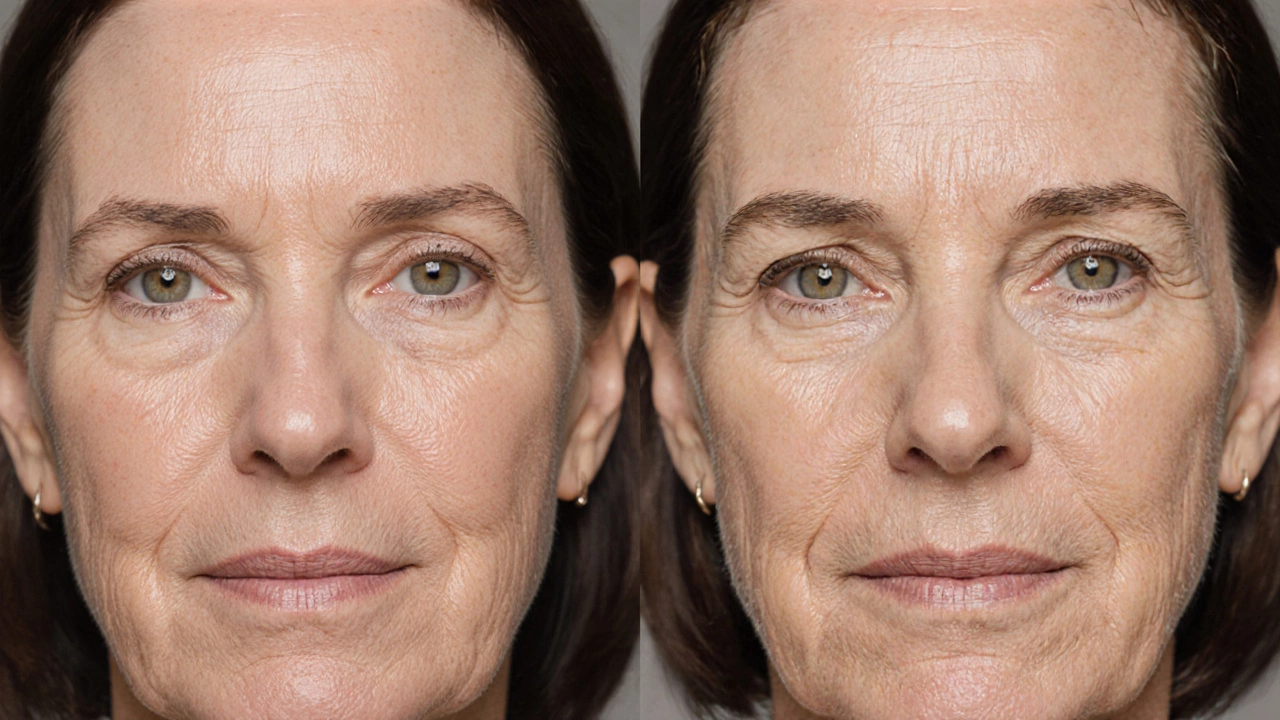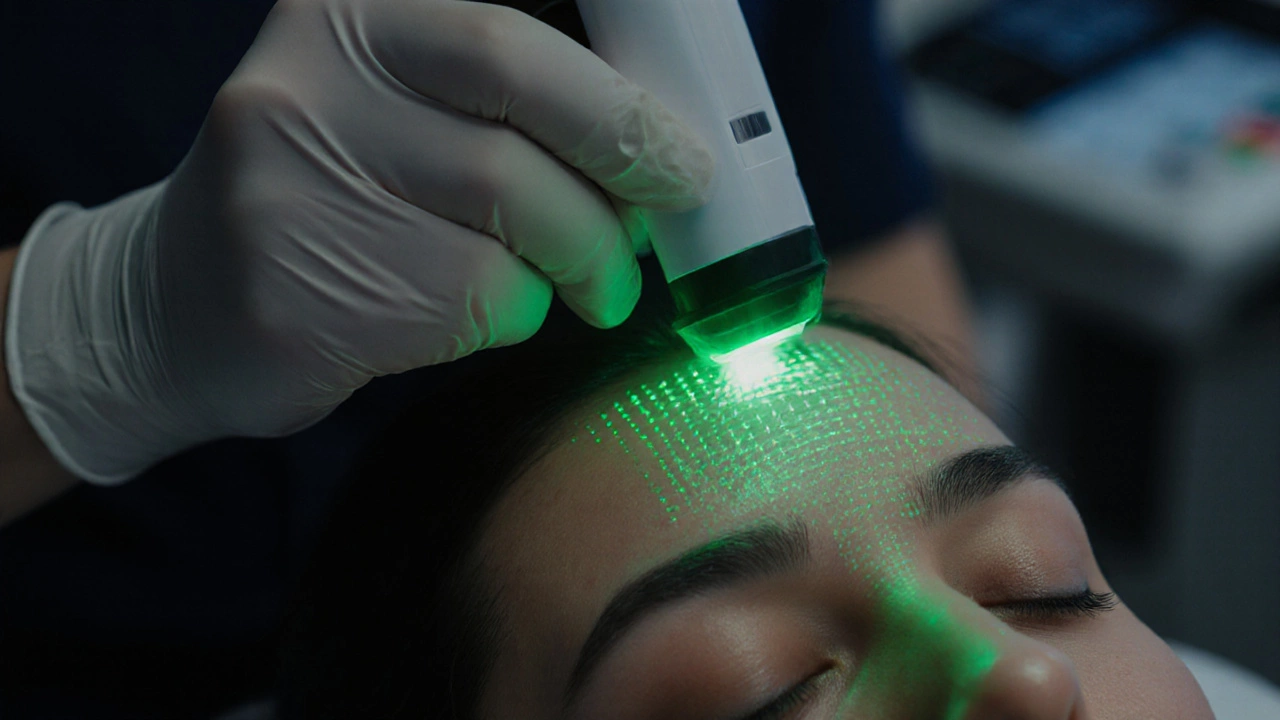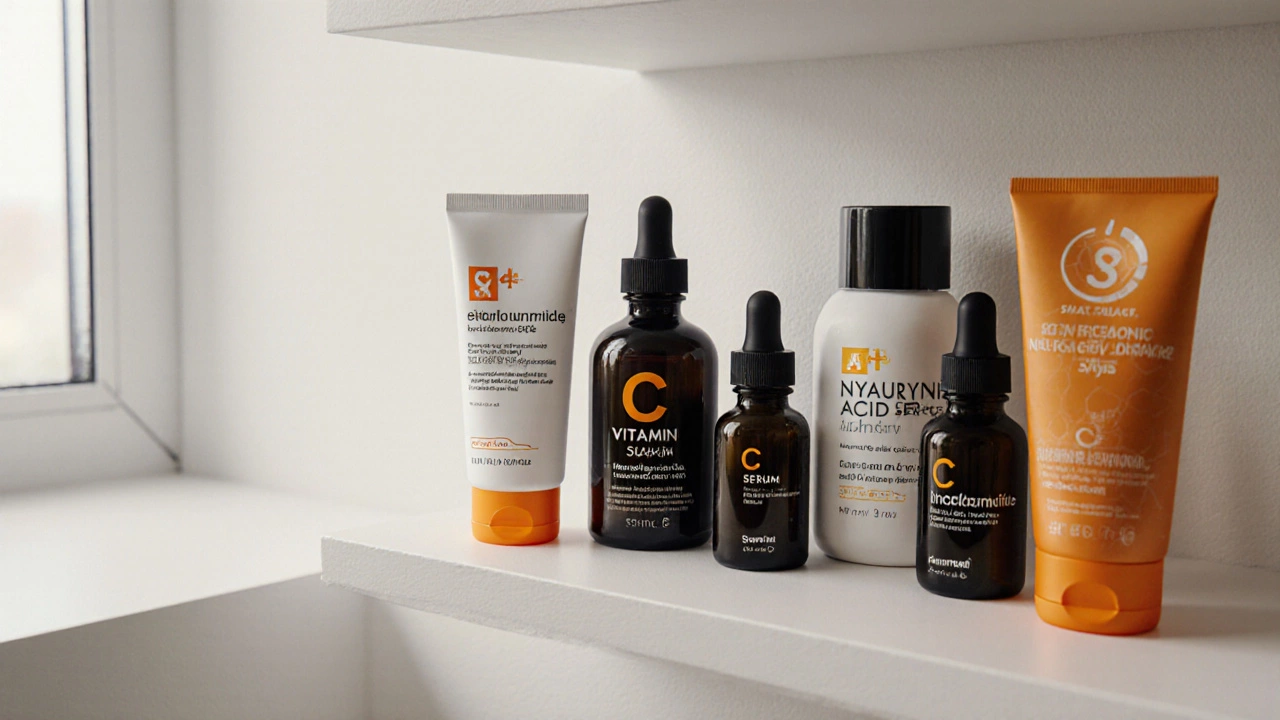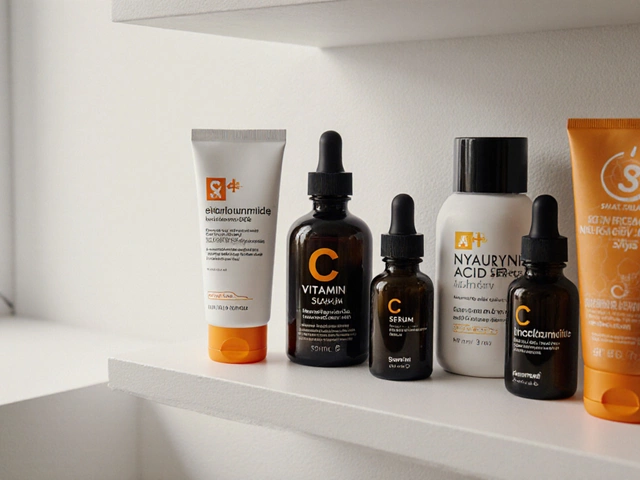Wrinkle Treatment Concentration Calculator
Determine Your Product's Effectiveness
Enter your skincare product's concentration to see if it meets dermatologist-recommended levels for wrinkle reduction.
Enter your product details to see if it meets dermatologist standards.
Wrinkles aren’t just a sign of aging-they’re a signal your skin needs better care. But with so many products, treatments, and claims out there, it’s easy to get lost. What do dermatologists actually recommend when someone walks into their office worried about fine lines and deep creases? It’s not what you see on Instagram. It’s not what the celebrity skincare brand pushes. It’s science-backed, clinically tested, and often simpler than you think.
Top Dermatologist-Recommended Ingredients for Wrinkles
The foundation of any effective anti-aging routine starts with ingredients that have decades of research behind them. Dermatologists don’t guess-they rely on what’s proven in peer-reviewed studies and real patient results.
- Retinoids (like tretinoin, adapalene, retinol): These are the gold standard. Tretinoin, a prescription retinoid, boosts collagen production, thickens the dermis, and speeds up cell turnover. Studies show visible wrinkle reduction in as little as 12 weeks. Over-the-counter retinol works too, but it’s slower-expect results after 3 to 6 months.
- Peptides: These are chains of amino acids that signal skin to repair itself. Look for palmitoyl pentapeptide-4 or acetyl hexapeptide-8. They don’t work as fast as retinoids, but they’re gentler and great for sensitive skin.
- Vitamin C (L-ascorbic acid): A potent antioxidant that neutralizes free radicals from UV exposure and pollution. It also helps build collagen. For real results, the formula needs to be at least 10% concentration and packaged in dark, airtight bottles.
- Hyaluronic acid: Not a wrinkle eraser, but a plumper. It holds up to 1,000 times its weight in water. When applied topically, it fills in fine lines temporarily and improves skin texture. Best used under moisturizer.
- Niacinamide (vitamin B3): Reduces inflammation, strengthens the skin barrier, and minimizes pore appearance. It also helps prevent further damage from sun exposure.
These five ingredients show up in nearly every dermatologist’s patient regimen. You won’t find them all in one product, and that’s okay. Layering is key.
What Dermatologists Say About Over-the-Counter Creams
Not every expensive jar on the shelf is worth it. Dermatologists see hundreds of products every year. Most are marketing with buzzwords-"miracle," "youth serum," "cell renewal"-without real active ingredients.
Here’s what they actually look for when recommending a cream:
- Active ingredients listed in the top 5 of the ingredient list
- Concentrations backed by clinical studies (e.g., 0.3% retinol or higher, 10-20% vitamin C)
- Stable packaging (airless pumps, opaque tubes)
- No heavy fragrances or alcohol that irritate the skin barrier
Brands like CeraVe, Paula’s Choice, and The Ordinary consistently make dermatologists’ shortlists because they focus on science, not hype. A $12 retinol serum from The Ordinary with 1% retinol and 2% hyaluronic acid often outperforms a $120 luxury cream with trace amounts of the same ingredient.
Procedures Dermatologists Recommend for Deeper Wrinkles
Topical products help-but if you have deep nasolabial folds, forehead lines, or crow’s feet that don’t budge, creams alone won’t cut it. Dermatologists turn to procedures with proven, measurable results.
- Botox (onabotulinumtoxinA): Works by relaxing the muscles that cause dynamic wrinkles-those that appear when you smile, frown, or squint. Results last 3 to 4 months. It’s the most common cosmetic procedure in the U.S., with over 3.5 million treatments in 2024 alone.
- Dermal fillers (hyaluronic acid-based like Juvederm or Restylane): Used to restore lost volume in cheeks, under eyes, and around the mouth. They don’t remove wrinkles-they replace the structure that’s gone. Results last 6 to 18 months depending on the product and area.
- Lasers (fractional non-ablative like Fraxel or CO2): Stimulate collagen deep in the skin. A series of 3-5 treatments can significantly improve skin texture, tone, and wrinkle depth. Downtime is minimal with non-ablative, but CO2 requires about a week of recovery.
- Radiofrequency (RF) and ultrasound (Ultherapy): Heat the deeper layers of skin to trigger tightening. Good for mild to moderate sagging. Results build over 2-6 months.
These aren’t one-time fixes. They’re maintenance. Most patients get Botox every 4 months and fillers every year. Lasers are done once or twice a year. Dermatologists treat wrinkles like a long-term project, not a quick fix.

The #1 Mistake People Make With Wrinkles
Skipping sunscreen. Every dermatologist says it. Every patient ignores it.
UV radiation is responsible for up to 80% of visible skin aging. Sun damage breaks down collagen, weakens elastin, and causes uneven pigmentation-all of which make wrinkles deeper and more noticeable. Even on cloudy days, UVA rays penetrate windows and reach your skin.
Doctors recommend a daily broad-spectrum SPF 30 or higher, reapplied every 2 hours if you’re outside. Mineral sunscreens with zinc oxide or titanium dioxide are preferred for sensitive skin. Look for formulations that don’t leave a white cast-many new ones blend in beautifully.
One patient, a 52-year-old teacher, came in with deep forehead lines. She used a $200 serum every night. But she never wore sunscreen. Within 3 months of adding daily SPF 30, her wrinkles softened noticeably-even before changing her serum. Sun protection isn’t optional. It’s the baseline.
What Dermatologists Don’t Recommend
There’s a lot of noise in skincare. Here’s what they actively advise against:
- Essential oils (like rosehip, argan, or tea tree) for wrinkle treatment: They’re not regulated, can irritate skin, and have no proven collagen-boosting effect.
- Ice rollers or jade tools: They feel nice and reduce puffiness, but they don’t stimulate collagen or reduce wrinkles.
- DIY scrubs with sugar or coffee: These can cause micro-tears in thinning skin, leading to more damage over time.
- Over-exfoliating: More than 2-3 times a week with AHAs or BHAs can strip your barrier and make wrinkles look worse.
- “Natural” anti-aging creams without active ingredients: Just because it says “organic” or “plant-based” doesn’t mean it works. If it doesn’t contain retinol, peptides, or vitamin C, it’s not treating wrinkles-it’s moisturizing.

How to Build a Dermatologist-Approved Routine
Start simple. You don’t need 10 steps. Here’s what works for most people:
- Morning: Cleanse with a gentle, non-foaming wash → Apply vitamin C serum → Moisturize → Apply SPF 30+
- Night: Cleanse → Apply retinoid (start with 2-3 nights a week) → Follow with moisturizer → Optional: peptide serum if skin feels dry
Wait 20 minutes after applying retinoid before moisturizing to reduce irritation. Introduce one new product at a time. If your skin stings or peels, scale back. Retinoids should feel like a gentle nudge, not a burn.
It takes 3 months to see real change. Most people give up at week 6. Dermatologists remind patients: consistency beats intensity.
When to See a Dermatologist
You don’t need to wait until wrinkles are deep. If you’re noticing:
- Lines that stay even when your face is relaxed
- Changes in skin texture-roughness, dullness, or thinning
- Dark spots or uneven tone alongside wrinkles
- Products you’ve been using for 6+ months aren’t helping
It’s time for a professional evaluation. A dermatologist can check for underlying conditions (like sun damage or hormonal changes) and customize a plan. They might suggest prescription tretinoin, chemical peels, or laser treatments you can’t get over the counter.
And yes-insurance may cover part of it if you have actinic keratosis or other sun-damage-related conditions. It’s not just vanity. It’s skin health.
Can you reverse wrinkles completely?
No, you can’t erase wrinkles completely. But you can significantly reduce their depth and visibility. With consistent use of retinoids, sunscreen, and professional treatments like lasers or fillers, most people see a 50-70% improvement in wrinkle appearance over 6-12 months. The goal isn’t perfection-it’s natural, healthy-looking skin.
Is retinol or tretinoin better for wrinkles?
Tretinoin is stronger and faster because it’s prescription-strength and converts directly into retinoic acid, the active form your skin uses. Retinol must be converted first, so it’s slower and less potent. If your skin tolerates it, tretinoin gives better results in less time. But retinol is a great starting point if you’re new to retinoids or have sensitive skin.
Do wrinkle creams work for deep wrinkles?
Topical creams help with fine lines and texture, but they can’t fill in deep wrinkles caused by volume loss. For deep folds around the mouth or forehead, you need fillers or neuromodulators like Botox. Creams support the skin’s surface; procedures rebuild the structure underneath.
How long does it take to see results from anti-aging products?
Retinoids and peptides take 8-12 weeks for initial changes, and 4-6 months for noticeable wrinkle reduction. Vitamin C shows brighter skin in 4-6 weeks. Hyaluronic acid gives instant hydration but no long-term structural change. Patience is non-negotiable-results are cumulative.
Are expensive skincare brands worth it?
Not necessarily. Many high-end brands charge for packaging, scent, or branding-not active ingredients. A $15 retinol serum from The Ordinary with 1% retinol and 2% hyaluronic acid has the same core actives as a $150 luxury serum. Focus on ingredient lists, not price tags.
Final Thought: It’s About Prevention, Not Just Repair
Wrinkles start forming years before you see them. The best time to start treating them? Yesterday. The second-best time? Today. Whether you’re 28 or 68, protecting your skin from sun damage and using proven ingredients like retinoids and vitamin C now will make a bigger difference 10 years from now than any expensive treatment you rush into later.
Skincare isn’t magic. It’s maintenance. And the people who look their best aren’t the ones who bought the most products-they’re the ones who stuck with the basics.

